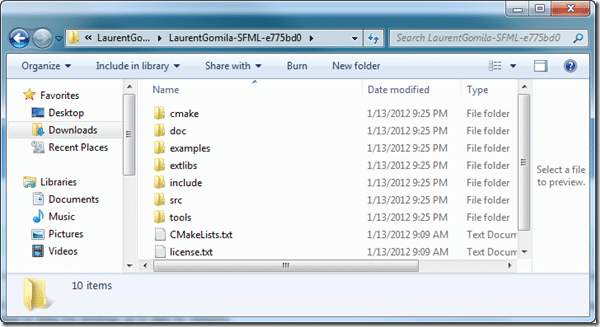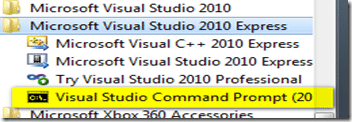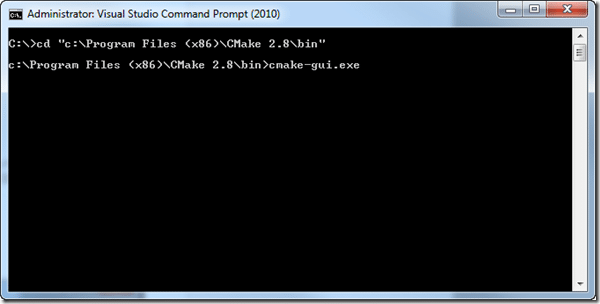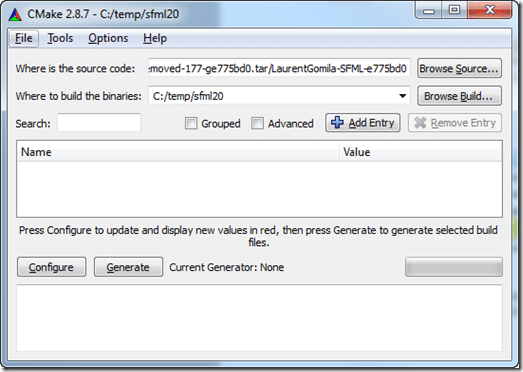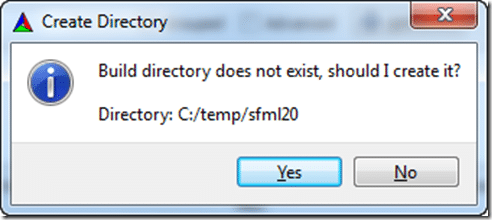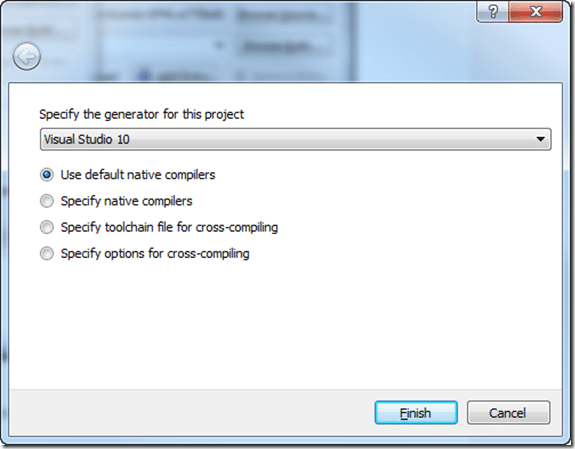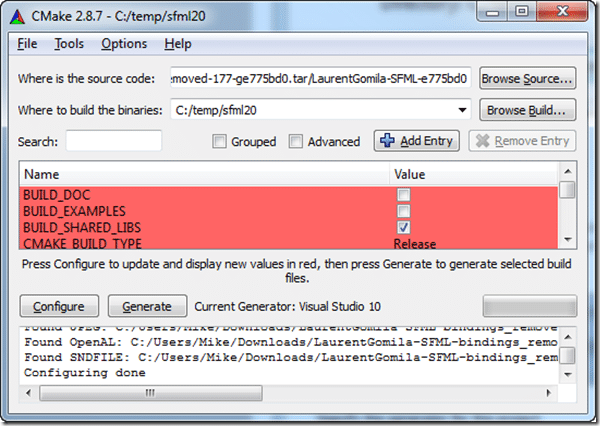Sadly SFML only included precompiled binaries for 1.6 and even in that case, they don’t support Visual Studio 2010. If you need to build SFML 2.0 for use with Visual Studio 2010, use the following step.
Go to this page and download the SFML 2.0 snapshot.
It’s a tar.gz file, if using 7zip, it means you will have to extract it twice. Extract it to a folder somewhere on your hard drive, the results should look like this:
Now you need CMake. Download and install it from here.
One installed, the next step is slightly tricky. CMake needs to be run with the environment variables for Visual Studio properly set so it can locate your compiler. This means you need to launch if from the command prompt provided by Visual Studio. If you are using Visual Studio Express, in the start menu launch the Visual Studio Command Prompt.
Now that you’ve launched the command prompt, change directory to your cmake executable folder. In my case it was c:Program Files (x86)Cmake 2.8bin. CD to that directory then run cmake-gui.exe.
The CMake GUI will now pop up. Click “Browse Source” and navigate to the folder you extracted SFML2 to. Then click “Browse Build” and navigate to where you want it to create all the project files, like I have below. Once done, click configure.
If the directory you selected doesn’t exist, the following dialog will appear:
Simply click Yes.
Now you are going to be prompted for what kind of project to generate, assuming you are using Visual Studio 2010 Express, select Visual Studio 10 then Finish, as follows:
If everything went ok, it will look like this:
The default settings are most likely what you want, now click Generate. If all things go correctly, your project files will have been generated in the folder you specified in “Where to build the binaries”. Here is mine:
Now simply double-click SFML.sln.
Visual Studio will load, now all you need to do is select the menu item Build->Build Solution in Visual Studio.
Voila! You just built SFML 2.0 using CMake and Visual Studio 2010. Look for the binary files in the lib folder. Keep in mind the include and extlib files are required too, and are in the directory you extracted to earlier.
If that didn’t work for you, you can simply download this version I’ve compiled. Keep in mind, SFML 2.0 is under constant development, so this version was only current as of 1/13/2012. This archive also included the Include folder as well as the extlib folder, which is all you should require to get started with SFML2.

